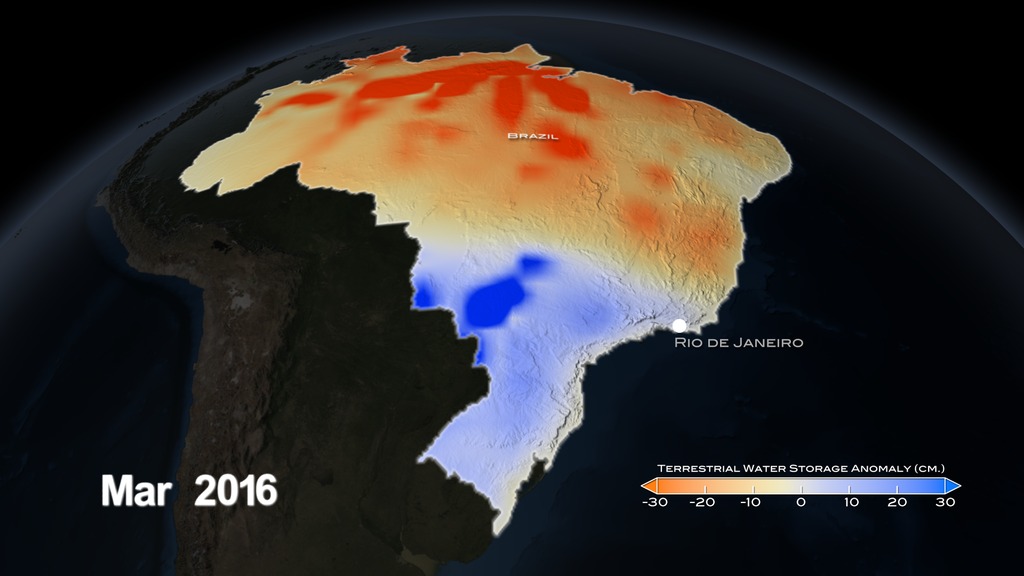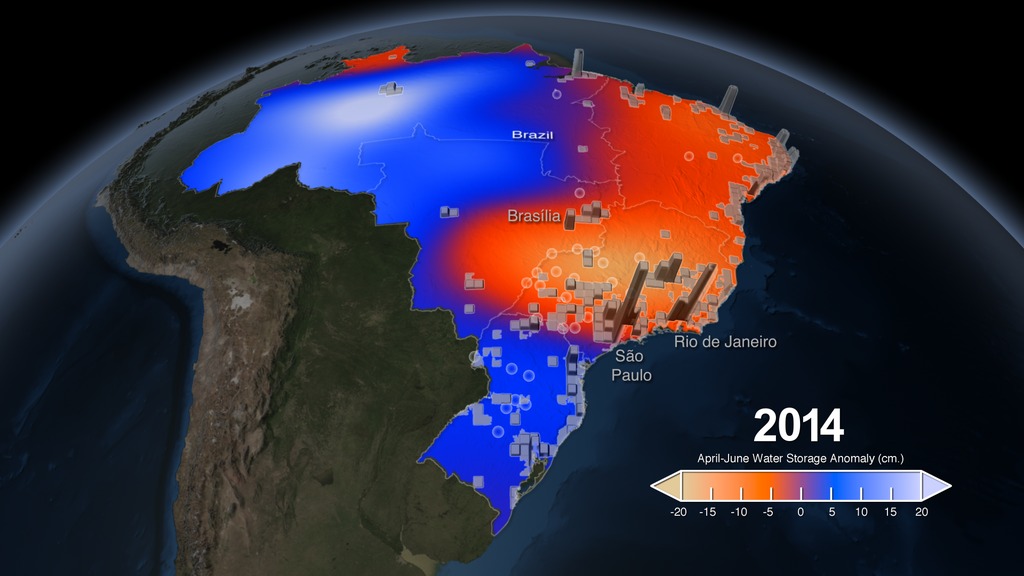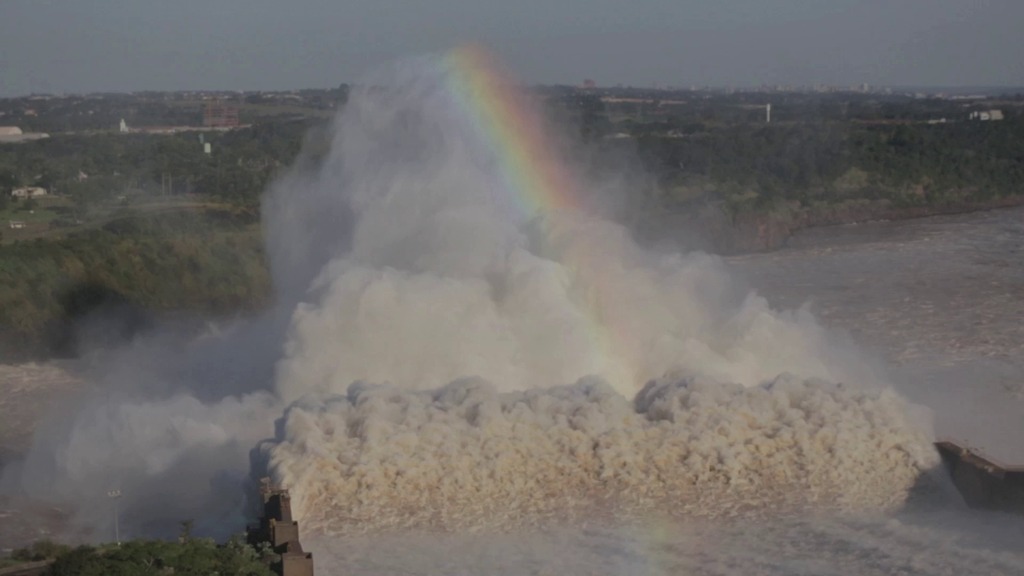Brazil’s Extreme Drought Seen From Space
Empty water reservoirs, severe water rationing, and electrical blackouts are the new status quo in major cities across southeastern Brazil where the worst drought in 35 years has desiccated the region. A new NASA study estimates that the region has lost an average of 15 trillion gallons of water per year from 2012 to 2015. Eastern Brazil as a whole has lost on average 28 trillion gallons of water per year over the same time period.
Augusto Getirana, a hydrologist at NASA's Goddard Space Flight Center, in Greenbelt, Maryland, analyzed the amount of water stored in aquifers and rivers across Brazil from 2002 to 2015, interested in understanding the depth of the current drought.
A new data visualization of 13 years of GRACE data shows the distribution of water across Brazil. Blues indicate increases in water, mostly occurring in the western regions of Brazil in the rainforest. Meanwhile red and orange shows where water stores have declined, occurring mainly in the north and southeast. At the beginning of the data collection, in 2002, Brazil was just coming out of a drought that began in 2000. A wet period followed until 2012 when dry conditions set in again due to a lack of precipitation and higher than usual temperatures, according to supplemental data.
Southeastern Brazil was hardest hit by drought conditions, said Getirana. To make matters worse, Brazil relies on rivers that feed into reservoirs and dams that generate about 75 percent of the electrical power for the country. By September 2014, for example, the Cantareira reservoir system that provides water for 8.8 million people in São Paulo's metro region reported that it was filled to 10.7 percent of its total capacity, a situation that has led to major water rationing.
Research: Extreme water deficit in Brazil detected from space.
Journal: Hydrometeorology, October 27, 2015.
Link to paper: http://journals.ametsoc.org/doi/abs/10.1175/JHM-D-15-0096.1
Here is the YouTube video.
Additional footage from: Itaipu Binacional Files.
This narrated video provides an overview of the science study and features NASA scientist Augusto Getirana.
For complete transcript, click here.

A GIF optimized for posting on Twitter.

A GIF optimized for posting on Twitter.

A GIF optimized for posting on Twitter.

A still image showing the location of the reservoirs that were analyzed. According to the study, these reservoirs all reached their lowest water levels since 2005.

A still image showing GRACE water storage anomaly data over Brazil for the months of April, May, June in 2014. Red and orange are areas with water losses; blues are gains. A color bar is not present.

A still image showing GRACE water storage anomaly data over Brazil for the months of April, May, June in 2014. Red and orange are areas with water losses; blues are gains. A color bar is present.

Water Storage Anomaly Colorbar for the months of April, May, and June. Red and orange indicates areas below average and shades of blue are above average water storage.
For More Information
Credits
Please give credit for this item to:
NASA's Goddard Space Flight Center
-
Data visualizer
- Alex Kekesi (Global Science and Technology, Inc.)
-
Scientist
- Augusto Getirana (ORAU)
-
Producers
- Joy Ng (USRA)
- Kayvon Sharghi (USRA)
-
Writer
- Ellen T. Gray (ADNET Systems, Inc.)
-
Narrator
- Joy Ng (USRA)
Release date
This page was originally published on Wednesday, October 28, 2015.
This page was last updated on Wednesday, May 3, 2023 at 1:49 PM EDT.
Missions
This page is related to the following missions:Series
This page can be found in the following series:Tapes
The media on this page originally appeared on the following tapes:-
Brazil’s Extreme Drought Seen From Space
(ID: 2015087)
Tuesday, October 27, 2015 at 4:00AM
Produced by - Liam Krauss (Hughes STX)



